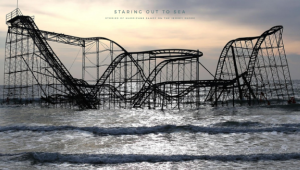 |
October 27, 2017 Volume 23, Number 43 |
Research and Education |
General Interest |
Network Tools |
In the News |
Research and EducationBack to Top | |
 |
|
 |
|
 |
|
 |
|
 |
|
 |
|
 |
|
 |
|
General InterestBack to Top | |
 |
|
 |
|
 |
|
 |
|
 |
|
 |
|
 |
|
Network ToolsBack to Top | |
 |
|
 |
|
In the NewsBack to Top | |
Considering the Impact of the Emoji: From the World of Language to the World of Public Health | |
|
How the Appetite for the Emoji Complicates the Efforts to Standardize the World's Alphabet https://www.nytimes.com/2017/10/18/magazine/how-the-appetite-for-emojis-complicates-the-effort-to-standardize-the-worlds-alphabets.html Why There's A Lot of Buzz About a Possible Mosquito Emoji Meet the 63-Year-Old in Charge of Approving New Emojis Unicode Emoji Subcommittee In defence of the emoji: how they are helping us to communicate better than ever Emoji, Texting, and Social Media: How Do They Impact Language? Today, there are 2,666 emojis available to help us express ourselves, including an octopus, a slice of pizza, and a tears-of-joy face (which was famously added to the Oxford English Dictionary in 2015). As emojis become increasingly ubiquitous, they have also provoked a variety of new debates. On October 18th, The New York Times published an article about how emojis are shaping the Unicode Consortium, an organization developed to assign a numerical value for every character used in writing. In doing so, Unicode has made it possible for users to type online in over 100 languages, including Latin and Cherokee. Since 2010, Unicode has also been responsible for assigning values to emojis, a development that is not without its detractors. On one hand, supporters argue that the popularity of emojis has accelerated the adaptation of Unicode. On the other hand, critics fear that as Unicode becomes bogged down with requests to add emojis, the consortium has less time to devote to the task of adding new languages. Meanwhile, emojis have also been in the news in the world of public health. Currently, Unicode is considering a request to add a mosquito emoji. Supporters of the mosquito emoji include the the Bill and Melinda Gates Foundation and the John Hopkins Center for Communication Progress, who hope that a mosquito emoji could help people communicate about mosquito-borne diseases including malaria, dengue, and Zika. In January Unicode will announce what emojis they will add to their collection, so stay tuned. [MMB] The first link takes readers to an article by The New York Times, authored by Michael Erard, about the history of the Unicode Consortium and how emojis are changing the organization. Next, the second link takes readers to an article by NPR's Courtney Columbus about the campaign for the mosquito emoji. Those interested in learning more about how Unicode decides which emojis to add will want to check out the third link, a 2016 interview by Time's Victor Luckerson with Unicode president Mark Davis. Visitors may also want to check out the official homepage of the Unicode Emoji Subcommittee, available via the fourth link. Here, visitors will find a chart of all existing emojis, along with a chart of current "emoji candidates." The last two links takes readers to two pieces that consider the impact of emojis on language and communication. Kashmira Gander of The Independent recently penned an editorial in defense of the emoji, which readers will find in the fifth link. Finally, the sixth link takes readers to a conversation between a number of language and communications experts about the impact of the emoji on human communication, which was published this summer in the Library of Congress's blog, The Signal. | |





